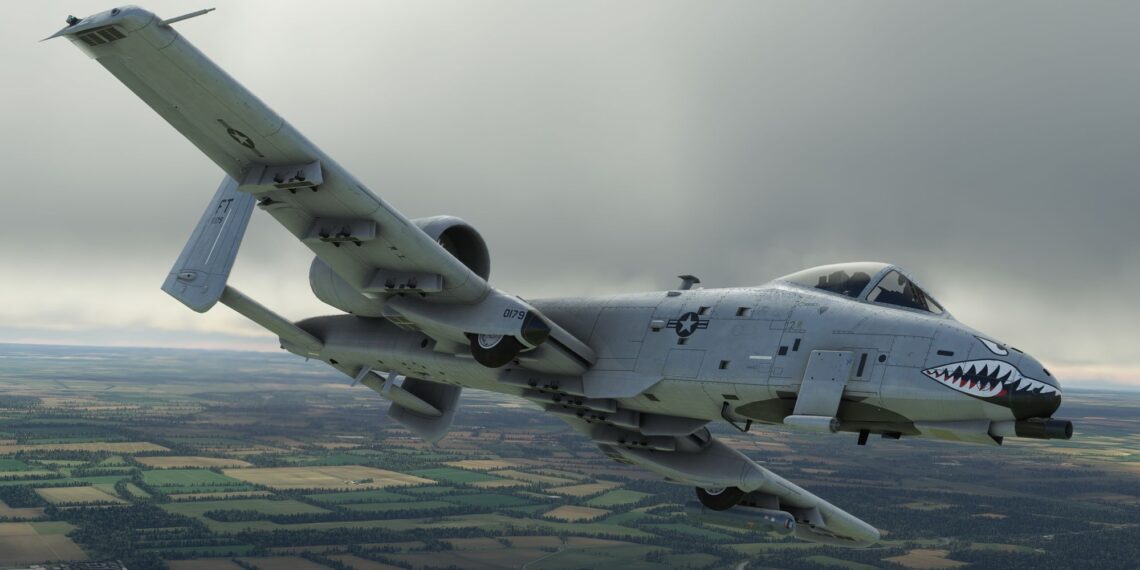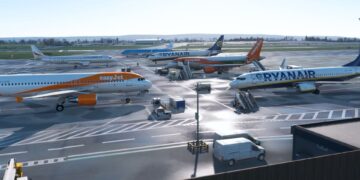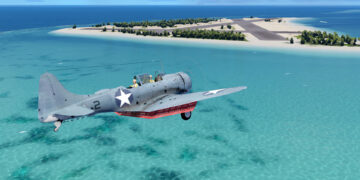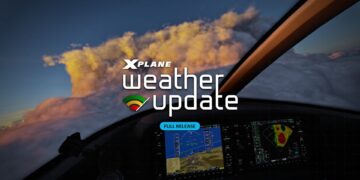Today Microsoft hosted a new and extensive livestream about the upcoming Microsoft Flight Simulator 2024.
The livestreamed event focused on the official marketplace and the software development kit (SDK) for developers.
The news was provided by Head of Microsoft Flight Simulator Jorg Neumann, lead SDK developer Eric, Associate Lead Tech QA SDK Sylvain, Associate Lead Gameplay Programmer Eran Idar, Marketplace Program Director Mabel McGrail, Head of Business Julie Diramio, and Marketplace Engineering Director Todd Heckel.
Speaking of the official marketplace, Microsoft is preparing to test ported marketplace content from Microsoft Flight Simulator 2020 to 2024. All existing marketplace content (currently live) will be ported.
This includes 8,300+ products across PC and Xbox. They will be imported by order of creator and each creator will be notified when their content will become available for testing.
Existing owners of content for Microsoft Flight Simulator 2020 will have it available automatically in their Library and via streaming.
Developers will be asked to sign off on content ported before it is available for new purchases in Microsoft Flight Simulator 2024’s marketplace. There will be an option in the Marketplace Content Portal for this.
Microsoft expects very little or no new content for Microsoft Flight Simulator 2024 when the simulator launches in the official marketplace. They expected to have only first-party content and ports from MSFS2020 that have been signed off by developers.
Upgrades of third-party MSFS2020 content including native features for MSFS2024 and new content specifically made for MSFS2024 is expected to come after launch.
Developers will be able to create MSFS2024 upgrades for the MSFS2020 content and they’ll be able to specify both a purchase price and an upgrade price for people who already own the MSFS2020 version. Upgrades can be free if the developer so wishes.
Upgrade to content published by Microsoft will always be free. Ported MSFS2020 versions without the upgrades will remain available for people who don’t want to upgrade.
For developers, the Marketplace Content Portal is being updated. The “Content Browser” option will be changed to “2020 Marketplace” and a “2024 Marketplace” option will be added.
The new 2024 Marketplace page will automatically include the content ported from 2020 and will be the entry point to submit upgrades. There is no date yet for when this will be opened but the hope is that it’ll be soon. The developers want to make sure that it’s polished and secure before making it available.
The marketplace data for each add-on for Microsoft Flight Simulator 2024 will now be inserted directly into the website by developers and not in the SDK as it was before. As such, that part is no longer included in the SDK. A package ready to be uploaded is required to insert this data. Media assets can also be uploaded here.
When you upload a package you also select PC and/or Xbox. Uploading a package will automatically ingest it into the draft state in the simulator. Only the creator and people designated by the creator will be able to access it in this state to test it.
Once the creator decides that the package is ready for sale, they will submit a release request, which cannot be undone. Creators can submit release requests only for the marketplace data if they so wish.
Developers will have to sign new terms of service including a rather big change. Cosmetic (non-functional) weapons will be added to be shown on aircraft sold on the official marketplace. They were forbidden for MSFS 2020. This decision was taken based on feedback from many users in the service of realism.
A summary of all the changes will be provided to developers. You can see how this website works here.
The developers expect products to take much less time to be published in the marketplace for MSFS2024 compared to what we had in 2020. This is due to the fact that the upload and ingestion process is optimized and mostly automated.
Developers still won’t be able to release add-ons exclusively for Xbox.
Speaking of content for Microsoft Flight Simulator 2020, it’ll be business as usual, and content will still be released on its marketplace. There will be no new releases on the US Thanksgiving Holiday and the traditional Black Friday Sale will be held as usual.
We also hear details about the pricing changes that happened on October 2nd for countries paying in Euros, the UK, Argentina, Turkey, Brazil, Japan, and Switzerland.
This was painful as most of these changes were upward. It was done to remove undue competitive advantages against other marketplaces and to apply VAT changes and tweaks for weakening currencies.
When comparing prices to US$ list prices it’s important to remove VAT. Prices for Europe are set at the Euro levels and aren’t country-specific with an assumed 20% VAT. The main reason for this is a platform limitation on Steam, and this has to be kept consistent.
Going back to the Microsoft Flight Simulator 2024, no changes have been made to the minimum price allowed per product.
Interestingly, Microsoft is thinking of asking developers how meaningful it is for them to add localization to add-ons in the marketplace, and while this has not been changed yet, it might in the future based on feedback from developers.
Developers will be able to decide whether to allow the temporary rental of marketplace add-ons or not. The price paid for the rental will be discounted from the purchase price if the user decides to move on with a purchase within a given time window. Developers won’t be able to change this.
Gifting of add-ons will work across platforms and the developers weren’t able to give a final response on whether there might be a limit. They may moderate it to avoid fraudulent gifting.
Neumann added that the Marketplace team is working very hard to have everything ready for the launch of the simulator. Yet, they have to be very careful as they are dealing with other people’s creations. If there’s any delay for the feature, it’ll be announced soon.
Moving on from the marketplace, Neumann mentioned that the satellite imagery will be the same for the two simulators. That being said, satellite imagery in MSFS2020 will remain as is for the first 2 months after the launch of MSFS2024. After that, it’ll be updated to the same as MSFS2024.
Prices also don’t change as exchange rates fluctuate. The changes for the countries mentioned above happened after 3 years for Argentina and Turkey, while the other countries had their prices changed after 4 years. This is because consistent prices should make buying more predictable.
We also hear a lot from the SDK team about the developer alpha that has been recently distributed, and we hear about some of the issues developers are facing. Do keep in mind that if you’re not a developer working on add-ons, most of the content below is not specifically for you.
That being said, the part about the EFB tablet at the end is definitely interesting for users as well.
Developers who are unable to launch the build and encounter performance issues should use the “Report an Issue” feature and will receive help. The VPS Projector can be used to browse VFS Projector.
The team has reviewed feedback about the ability to control new terrain features and will implement missing options.
Speaking of backward compatibility, the issue developers are encountering with LODs has been fixed for Microsoft Flight Simulator 2020 packages. The fix will be included in the next update to the build.
Below you can see the problem and the fixed version will be included in the new dev alpha, which has been sent from Asobo to Microsoft today and should be released very soon.
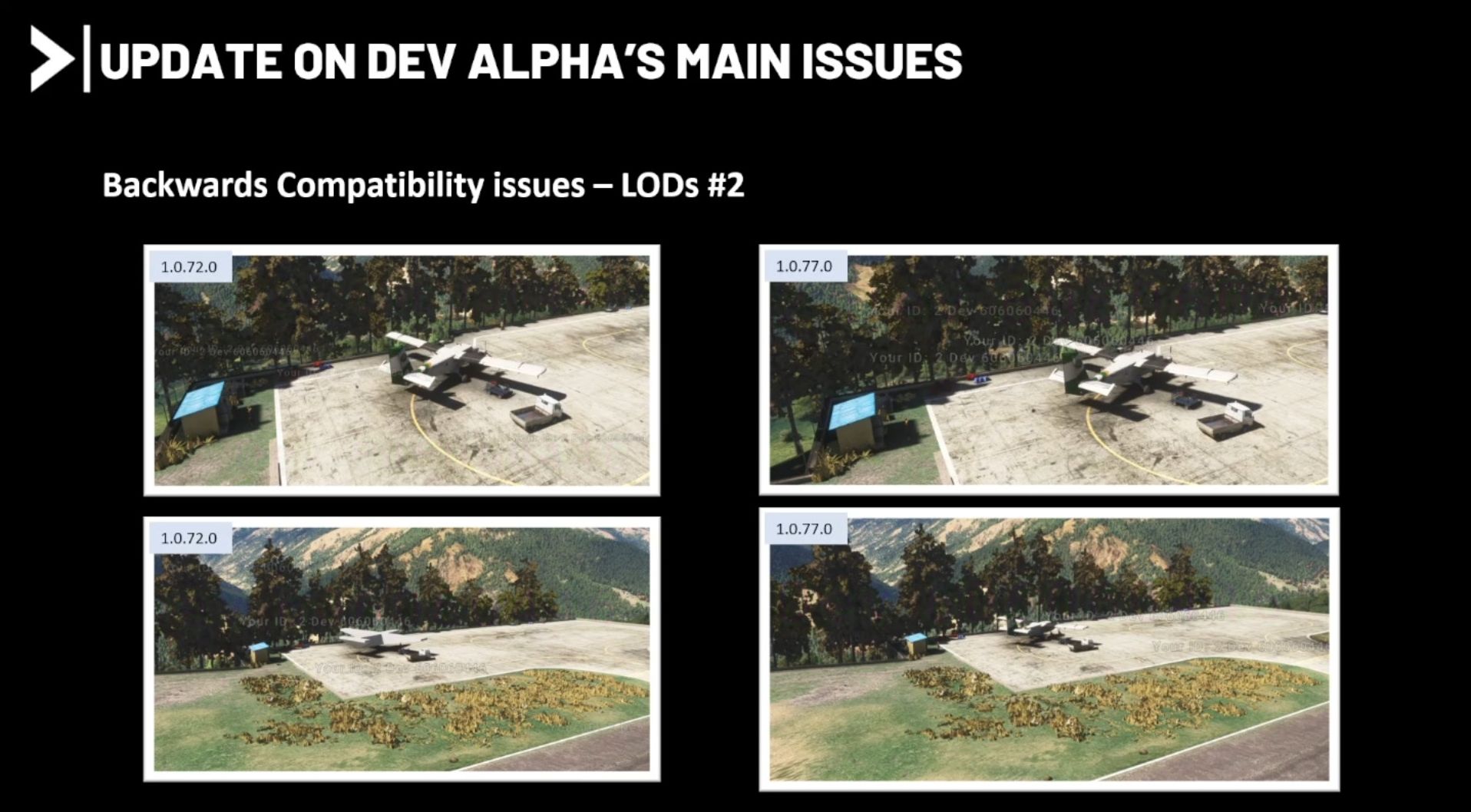
Another problem affects the spawning of pilot and copilot models. It has been partially fixed while other fixes are pending as you can see below.
The issue with the lights being too strong has been fixed already.

Windshield reflections that were too strong are fixed. The fix for the lack of normal maps on icing is on the list to be done. The issue with displays being too dark or black had a fix that was completed this afternoon. It won’t be in the next build but it’ll come in the one afterward.
Issues with XML gauges are work-in-progress. Parts of them have already been fixed but more fixes will come afterward.
More backward compatibility issues with airports and scenery can be seen below. The rocks of the runways have been fixed. Animations not running in the background have been fixed. Ground vehicle sounds not working have been fixed.
A fix for odd behavior for AI traffic is in the works. The automated cancellation of displacement mapping has been fixed but won’t be in the next build just yet. It’ll be in the one afterward.
For new scenery for Microsoft Flight Simulator 2024, an option to deactivate the cancellation of displacement mapping will be provided.
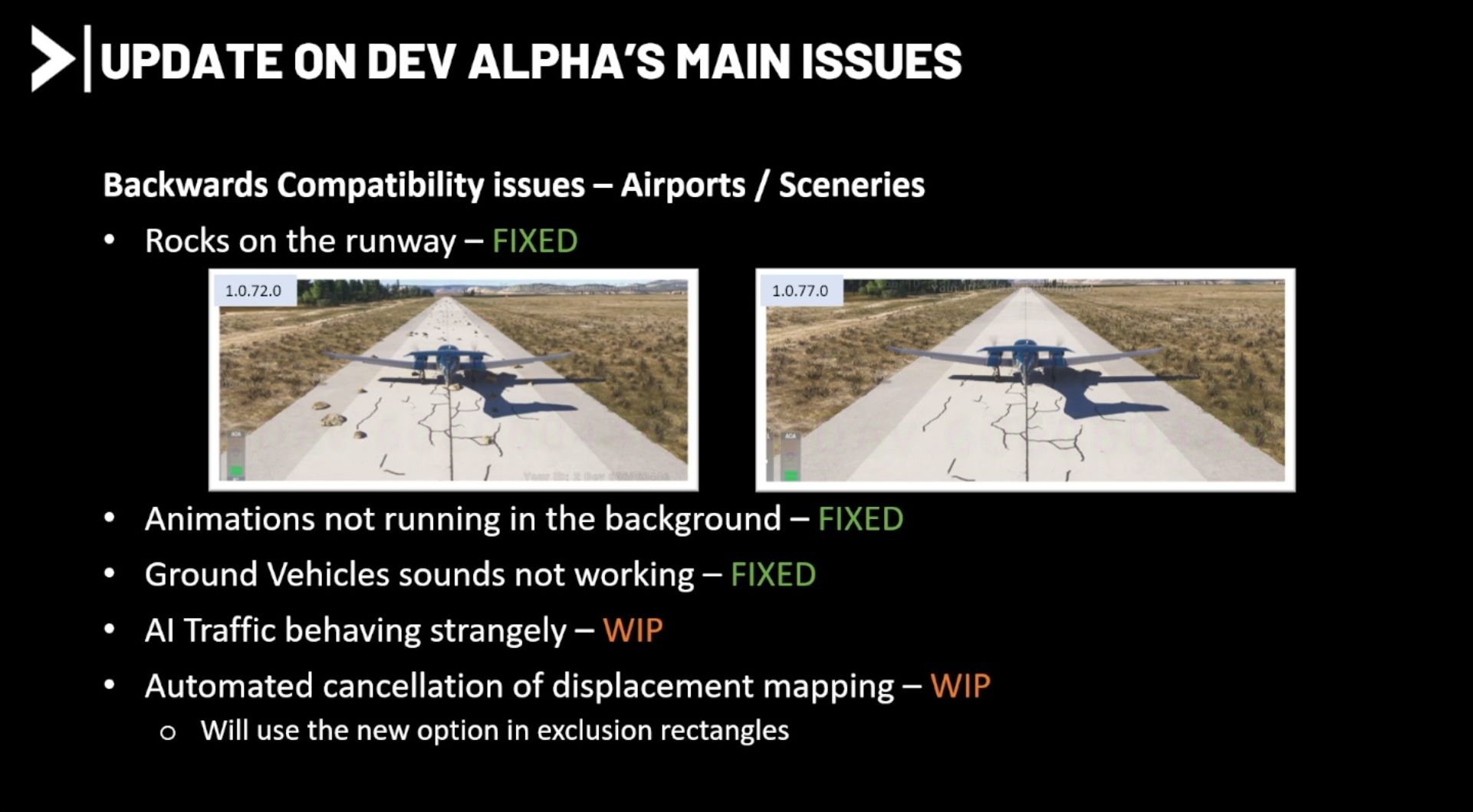
Speaking of liveries, the documentation is missing for now. It’s coming but the process has not been changed much. There are changes only for native Microsoft Flight Simulator 2024 aircraft with the modular simobjects (or MSFS2020 aircraft updated to the modular simobjects), which will require new liveries.
Fixes to the wrong thumbnails in the aircraft selector and to the wrong titles are in the works.
The developers also provided an update on what will change in MSFS2024’s digital twin of Earth, as they may affect third-party scenery.
The vegetation mask was updated this week to match the latest aerials. Crop fields will be updated for almost all regions of the world in the upcoming days and weeks.
The new TIN (photogrammetry) for world updates 17 and 18 will be added and some locations will be updated with new DEM (digital elevation maps). You can see these locations in the map below.
Green indicates moderate changes, while red indicates significant changes, with yellow being in-between.

147 bug reports have been filed and so far about 30% have been processed. About one-third are about issues with aircraft and one-third about scenery. The goal is to have the vast majority of the bugs to be processed by next week.
There should be a way to automatically convert aircraft lights to one of the three new types. Unfortunately, drive-through parking spots have not been implemented in the new simulator, but the developers are open to the submission of new feature requests in the “ideas” section of the developer forums.
We also get information on the EFB tablet from the development perspective. It’s available in 2D on any screen via pop-up and in 3D in the cockpit.
Two sizes are available alongside two orientations, portrait and landscape. It’s completely optional so developers may decide to omit it.
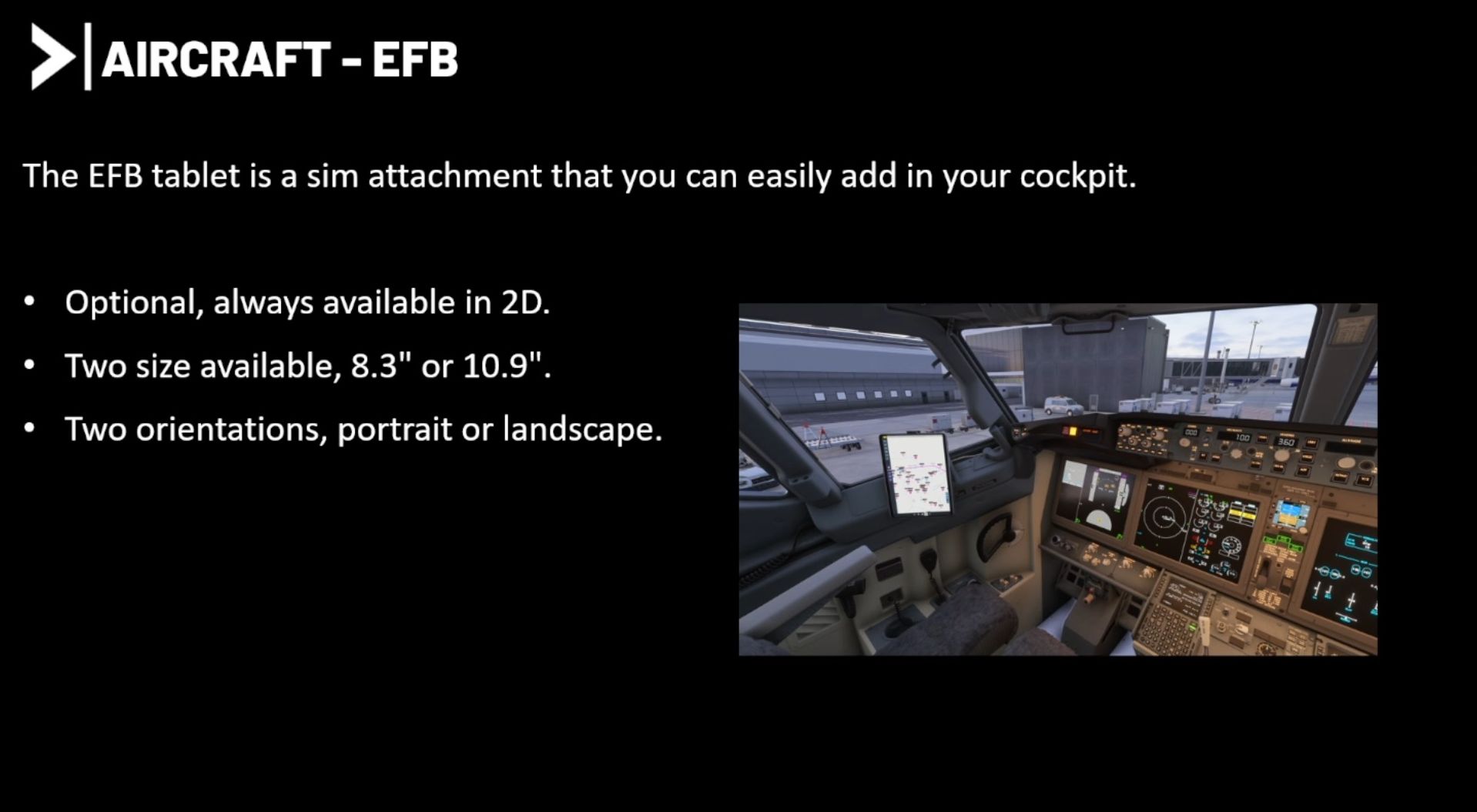
Below you can check out the aircraft tab including aircraft performance prediction, checklists with increasing complexity depending on the level of detail selected by the user (standard, advanced, and expert), and the fuel and payload section that has been completely reworked with the inclusion of tabs setting seats, batteries, cargo, fuel, battery, ballast, liquid (for firefighting aircraft), and empty weight.
Users will be able to fill the seats and directly have the weight and balance affected.
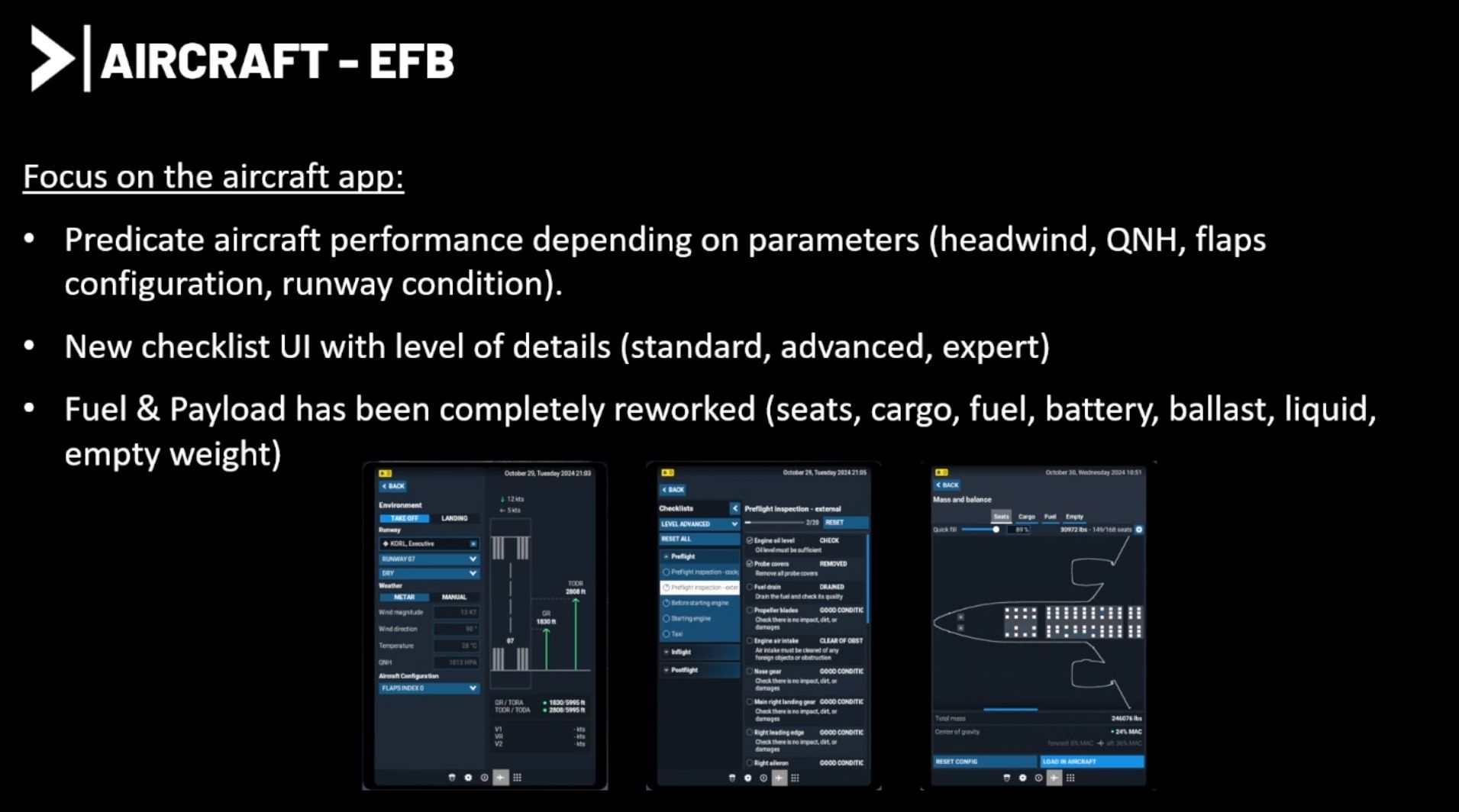
The tablet can be hidden by the user via a button.
Developers will be provided with an API and templates so that developers will be able to create apps for the EFB. Apps can be published on the marketplace or be available only with specific aircraft.
It’s Javascript-based and WASM integration won’t be available for launch. It’ll come at a later date.
Microsoft Flight Simulator 2024 will be released on November 18 for PC and Xbox Series X|S. You can enjoy our hands-on preview with plenty of interesting details for your perusal.
You can also watch our interview with Head of MSFS Jorg Neumann and Asobo CEO Sebastian Wloch, another with Asobo CCO David Dedeine, and one featuring Chris Burnett of Working Title and Brandon Yaeger of Got Friends about their work on MSFS 2024.
Last, but not least, you can take a look at our A-10 flight through the Grand Canyon, our first look at the extensive pilot customization, another at the first mission of the Career Mode, a video featuring the new walk-around move showing off a Boeing 737 MAX up close and personal, and a challenge with the A-10 over the Blue Ridge Mountains.

